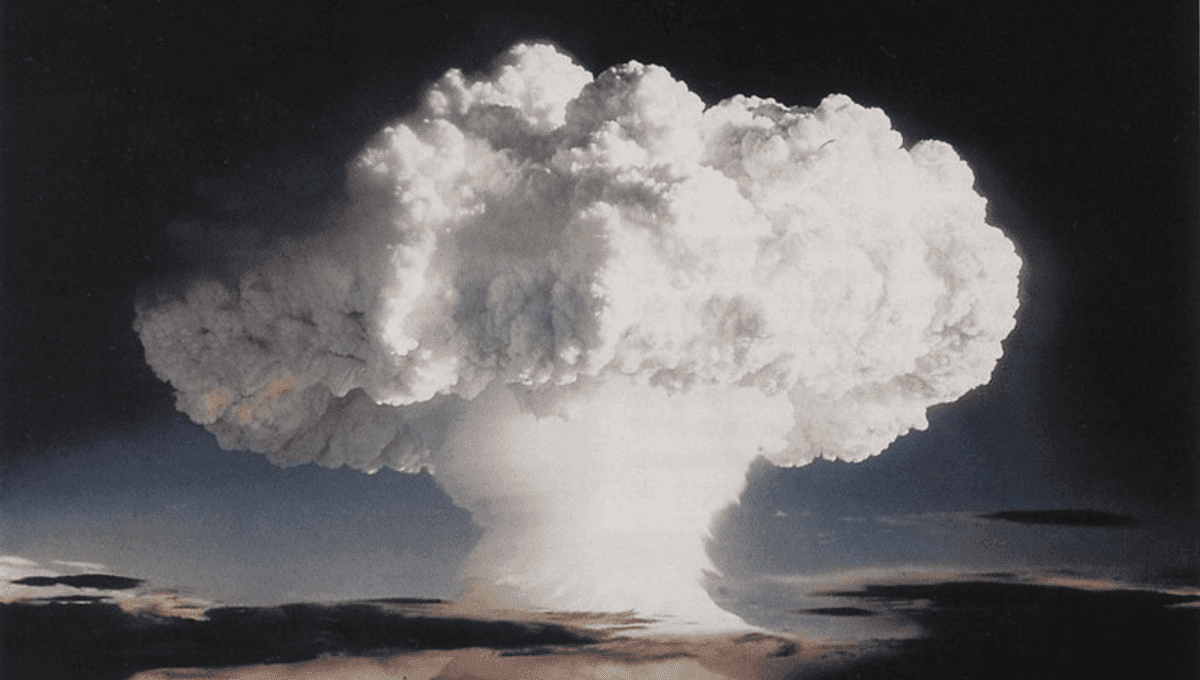
Residents of French Polynesia have higher rates of thyroid cancer than would have occurred without the 41 atmospheric nuclear tests France conducted in the region, a new study has found. The number of extra cancers is small, which may be why it has taken almost 50 years from the end of atmospheric testing to measure them, but they vindicate the creation of the Partial Test Ban Treaty.
During and after World War II, so many nuclear weapons were exploded in the atmosphere that the radioactivity is used to identify the Anthropocene. This radiation has reached every part of the planet, but in such low quantities that attributing additional illness to it, let alone deaths, has generally been impossible. It’s different for people who were dangerously close to the explosions, most obviously the residents of Hiroshima and Nagasaki, but also including clean-up crews, and Indigenous people whose lands were used as testing sites.
Residents of French Polynesia, like those of the Marshall Islands, are in an intermediary category. The bombs exploded over islands that were no longer inhabited, but some populated islands lie within 100 kilometers (60 miles). In a new study, scientists from mainland France and French Polynesia investigated 395 thyroid cancers in the region to see if the bombs played a part.
Iodine-131 is among the most abundant radioactive isotopes released by nuclear weapons. With a half-life of eight days, much of it lasts long enough to be blown downwind of the test site, but it decays quickly enough to release high levels of radiation. Most importantly, the body concentrates iodine in the thyroid and treats all isotopes the same. There, the beta radiation released by iodine-131 can damage cells, leading to increased rates of thyroid cancer.
The French government declassified measurements of iodine-131 in the soil, air, water, and food across French Polynesia in the wake of above-ground tests conducted there from 1966-1974, revealing higher rates of nuclear fallout than had previously been claimed.
The authors calculated the radiation exposure for 395 thyroid cancer patients based on their age and the islands on which they grew up. These were compared with healthy controls of the same sex and as similar ages as possible.
The authors conclude that 1,524 cases of differentiated thyroid cancers (DTCs) would have occurred in French Polynesia over the study period without the testing. The additional radiation exposure caused a further 29 cases, or 2.3 percent. Allowing for uncertainties, between 0.6 and 7.7 percent of DTCs in the region are the consequence of testing. The figures relate to cancers serious enough to require surgery. When microscopic non-invasive cancers were added, the association was not statistically significant.
Radiation may not be the only way colonization contributed to thyroid cancer. Previous research from some of the same authors showed the traditional Polynesian diet may be protective against DTCs; thyroid cancers may be elevated in the area as a result of dietary changes causing deficiencies in (non-radioactive) iodine.
This is definitely one of those results you can interpret in two ways. “This finding suggests that the number of thyroid cancer cases and the true order of magnitude of health outcomes associated with these nuclear tests were small, which may reassure populations of this Pacific territory,” the authors write. On the other hand, the people of French Polynesia may well feel that any raised risk is an outrageous imposition from a government unwilling to do anything similar to residents of continental France.
Nuclear tests continued in French Polynesia until 1996, but for the last 21 years were conducted underground, minimizing the spread of radioactivity beyond the test islands.
The study is published in JAMA Network Open.
Source Link: French Nuclear Testing In Pacific Slightly Raised Cancer Rates In Polynesia